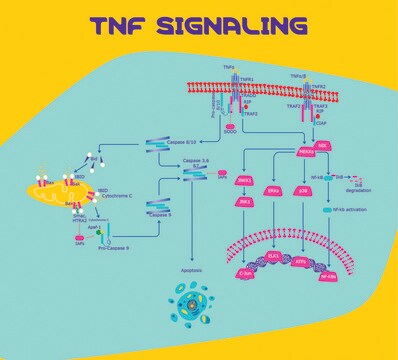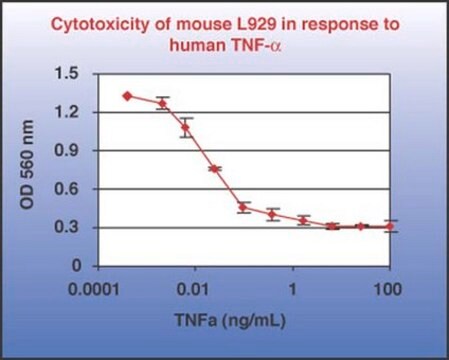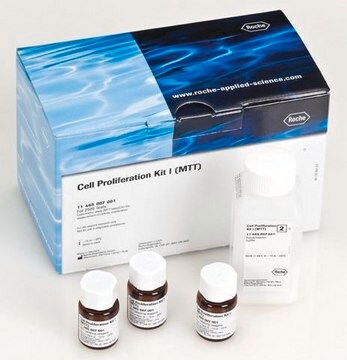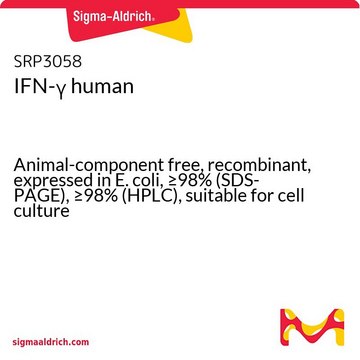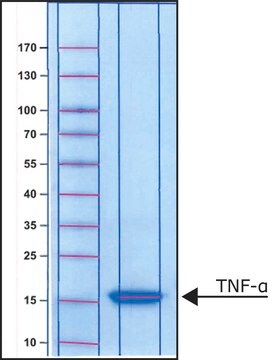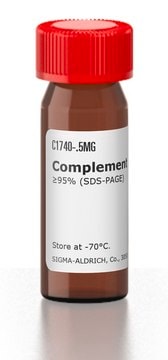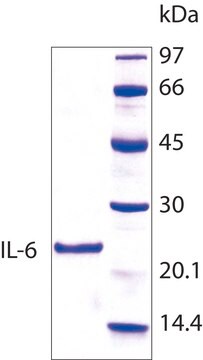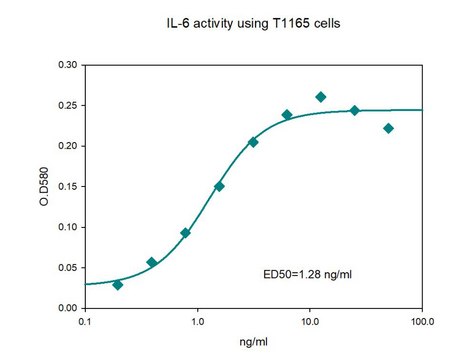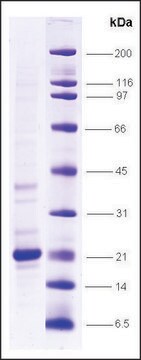T6674
Tumor Necrosis Factor-α human
≥97% (SDS-PAGE), recombinant, expressed in E. coli, powder, suitable for cell culture
Synonim(y):
hTNF-α, TNF-α
About This Item
Polecane produkty
Nazwa produktu
Tumor Necrosis Factor-α human, TNF-α, recombinant, expressed in E. coli, powder, suitable for cell culture
pochodzenie biologiczne
human
Poziom jakości
rekombinowane
expressed in E. coli
Próba
≥97% (SDS-PAGE)
Formularz
powder
siła działania
0.02-0.3 ng/mL ED50/EC50
jakość
endotoxin tested
masa cząsteczkowa
~17.4 kDa
opakowanie
pkg of 5x10 μg
pkg of 10 μg
warunki przechowywania
avoid repeated freeze/thaw cycles
metody
cell culture | mammalian: suitable
zanieczyszczenia
<1 EU/μg
numer dostępu UniProt
temp. przechowywania
−20°C
informacje o genach
human ... TNF(7124)
Szukasz podobnych produktów? Odwiedź Przewodnik dotyczący porównywania produktów
Zastosowanie
- to analyze the effects of cytokine TNFα-stressed human neuronal and glial (HNG) cells
- to investigate the molecular mechanisms of TNFα-mediated prolyl-4 hydroxylase α1 (P4Hα1) suppression
- to induce death-receptor-mediated apoptosis in HeLa cells.
Działania biochem./fizjol.
Postać fizyczna
Komentarz do analizy
Wybierz jedną z najnowszych wersji:
Masz już ten produkt?
Dokumenty związane z niedawno zakupionymi produktami zostały zamieszczone w Bibliotece dokumentów.
Klienci oglądali również te produkty
Protokoły
WST-1 assay protocol for measuring cell viability, proliferation, activation and cytotoxicity. Instructions for WST-1 reagent preparation and examples of applications. Frequently asked questions and troubleshooting guide for WST-1 assay.
Protokół testu WST-1 do pomiarów żywotności i cytotoksyczności komórek z instrukcjami przygotowania, zastosowaniami, często zadawanymi pytaniami i rozwiązywaniem problemów.
Protocol Guide: XTT Assay for Cell Viability and Proliferation
Przeprowadzanie testów kolorymetrycznych w celu nieradioaktywnej kwantyfikacji proliferacji, żywotności i cytotoksyczności komórek przylegających lub zawiesinowych hodowanych w 96-dołkowych mikropłytkach.
Nasz zespół naukowców ma doświadczenie we wszystkich obszarach badań, w tym w naukach przyrodniczych, materiałoznawstwie, syntezie chemicznej, chromatografii, analityce i wielu innych dziedzinach.
Skontaktuj się z zespołem ds. pomocy technicznej